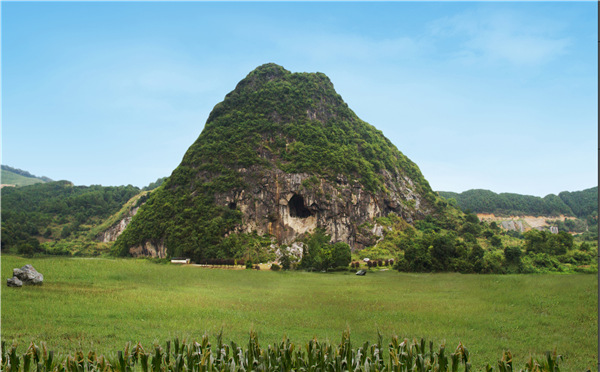Wanshouyan discoveries
By Wang Kaihao | China Daily | Updated: 2020-02-18 07:25

Chen Ziwen, a researcher at Fujian Museum, felt the pressure when the first trials went in vain. However, the silver lining appeared in October that year. Lithic artifacts were unearthed in Lingfeng Cave at the site. Retouched tools, including six scrapers, two chopping tools and one possible burin, were identified.
"They share similarities with many production sites of the stone-tool tradition in southern China with regard to the sizes of stone artifacts," Chen says.
"But the large proportion of flake tools and scrapers also make the site distinct."
On New Year's Day in 2000, President Xi Jinping, then Fujian's acting governor, issued an instruction for Wanshouyan, saying the site was the first key Paleolithic finding in Fujian and a crucial prehistoric heritage.
"It is a must to carefully protect the site," Xi said.
He demanded the steelworks immediately stop explosions in the mountains and cooperate with the archaeological research.
In a short time, Xi issued another instruction asking the provincial cultural department to draft a specific plan to protect the site. All mining work in the Wanshouyan area stopped.
"That put our minds at ease," Yu says."And we were all excited by the fruitful discoveries there."
Scholars nationwide began to visit Wanshouyan, which was listed as one of China's top 10 archaeological discoveries in 2000.
Within a year, the site was rated by the different tiers of government as a cultural heritage site under key protection, from the city to national levels.
In 2002, a special administration for Wanshouyan was set up and a city-level regulation overseeing the site was promulgated. The National Cultural Heritage Administration approved the research-and-preservation plan at the site in 2005.
One year later, a new museum opened to the public showcasing relics found there. It was renovated and updated in 2014.
New findings have also popped up in the past 20 years. Some 400 square meters, or one-third of the total area of Lingfeng and Chuanfan caves, were excavated, during which over 800 lithic artifacts and tools made of bones were found. The most recent discovery was from 10,000 to 30,000 years ago, Yu says.
An artificial ground surface on limestone blocks inside Chuanfan Cave is a highlighted finding, which stands out among other discoveries from the Paleolithic time in China. About 120 square meters of such surface, dating to 40,000 years ago, are preserved.
"Such construction remains had never been discovered in China before," Yu says.
Xia Zhengkai, a professor from Peking University, says the ground surface was artificially paved because the single layer of ground has even thickness and no mark of water-runoff erosion was detected on its bottom.
Analysis of the material also showed the ground and the rocks in the surrounding natural environment of the cave are different, he adds.
You Yuzhu, an anthropologist with the Chinese Academy of Sciences, argues it might be the "earliest known interior decoration created by human beings".
Scholars also believe that studies of Wanshouyan can provide research connections between early human settlements in Fujian and Taiwan across the Straits due to similar artifacts from 5,000 years ago found in Taitung in 1986.
In December, a symposium was held in Sanming, where about 60 archaeologists and anthropologists from China and other countries were invited by the Fujian government to exchange ideas about the Wanshouyan site.
Yu says the continuous protection of the site requires the full participation of society beyond academia. The introduction of tourism is a way to do that.
To further improve the area's natural environment, more factories nearby were shut in 2012, and routes of some roads for cargo transportation were also changed. Some 3 million yuan was spent in 2016 to clear out the slag left by the former manufacturers.
Nevertheless, the industry also has its legacy. Last year, an old factory building opened as a tourist center after renovation and a hiking trail was created at the site. More such places will be turned into tourist attractions featuring eco-friendly agriculture and local folk culture, according to the local government.
A new archaeological-ruins park covering over 3 square kilometers is also being planned to attract more people to the excavation site by providing more exhibitions and interactive activities.
"Our job started with rescue but it has now become a long-term mission," Yu says, adding that he hopes the site will be listed by UNESCO.
Hu Meidong contributed to the story.























